Heading Guide
Values and attitudes
Eating and Food
Culture
Transportation
Payment
Security in Iran
The most important things to know when you travel to IRAN
In this text, you may discover all of the important data in your adventure to Iran. Our intention has been to cowl all of the important data for people making plans to journey to Iran. By presenting up-to-date and applicable data that's created and maintained via way of means of locals, we are hoping this text solves all of your questions and worries concerning touring Iran.
Scroll Down
Values and attitudes
Islamic values, Modern attitudes
Iran has some of this streak Islamic laws in the Middle East with the exception of Saudi Arabia but ironically perhaps in the most colorful diverse Society in the region, visitors often find the picture of Iran the encounter as tourist or business Travelers bears no resemblance axis of evil State portrayed in the western press. They're all restrictions for sure women must cover their heads and all bodily contours. Alcohol is strictly prohibited anywhere dancing is frowned and mix-sex parties with western music are illegal. Sexual relations outside of marriage are forbidden and are punishable by jail sentences or even death. kissing or other such a contact between partners in public is complete no-no homosexuality is also strictly legal. Satellite television is banned. However, this is not the whole story since the late 1990s thanks to and effects of its huge youth population the country presents a far more welcoming face to foreigners than decades after the revolution. the parks are now filled with the young couples holding hands and quietly flirting. while many more women still opt to wear the all-enveloping black chador.
Women (Hijab)
Don't come to Iran expecting women to be shy. Indeed, within hours of arriving in Iran, you are likely to have witnessed a scene like a female car driver giving a piece of her mind to a male fellow driver who she believes cut her off. Visitors expect the position of women to be similar to Saudi Arabia, where it is even illegal for them to drive, but this simply is not the case. Women in Iran are well educated and opinionated, and many have successful careers. The most conspicuous aspect of women's lives in Iran is the Islamic dress code. There are no exceptions and foreign women must obey the laws like any Iranian. This means female visitors must wear a headscarf and body coat anywhere in public, including in hotels and restaurants. In winter, wearing Hijab should not be too much of a hassle but some feel burdened by extra clothing in the heat of Iran’s summer.

Making friends and friendships in Iran
Making friends as a foreigner seems extremely easy in Iran. Everywhere you go, people will want to engage you in conversation, ask you about your country, and want to know what you think of Iran. You will be showered with invitations to tea and meals and even given gifts by strangers. This is partly because the idea of friendship (Dusti) is valued highly by Iranians. War and economic problems have meant that life has not been easy for many people over the last years and they have learned to count on each other. Iranian proudly say how strangers will immediately stop to help if they see a car broken or someone in trouble.
In Iran, making genuine friends as a visiting foreigner, like in any other country in the world, is not always straightforward. Western visitors are likely to be considerably richer than Iranians they meet and the question of money can always cause underlying strains. Despite the similarities to life in Europe and the US, some aspects of Iranian culture (Farhang) are very different, and breaking this barrier takes time, understanding, and effort.
Making conversation in Persian
Iranians are immensely proud of their language and how it has retained its difference from Arabic, which is even less widely spoken than English outside the clerical elite. The language also boasts great literature, most famously in the work of the sensual medieval poets like Hafez and Saadi but also in modern poets and novels.
Poetry is still important in daily life; it is not unusual to be stuck in a Tehran traffic jam and find the taxi driver suddenly reciting the verses of Hafez. Imagine being in London traffic and the driver suddenly waxing lyrical over a Shakespeare sonnet!
Making some basic conservation in Persian will endear you to almost everyone in Iran and make you an instant celebrity.
A Few Useful Sentences and Phrases
| 1 | Hello | SAALAM |
| 2 | Good-Bye | KHODA HAFEZ |
| 3 | Yes | BAALE |
| 4 | No | NA |
| 5 | See You Later | BAADAN MIBINAMET |
| 6 | Good Morning | SOBH B KHEIR |
| 7 | Good Evening | ASR B KHEIR |
| 8 | Good Night | SHAB B KHEIR |
| 9 | How Are You? | HALET CHETORE? |
| 10 | I'm Fine | MAN KHOOBAM |
| 11 | I Miss You | DELAM BARAT TANG SHODE |
| 12 | What's Up? | CHE KHABAR? |
| 13 | Thank You | MAMNOON |
| 14 | You're Welcome | KHAHESH MIKONAM |
| 15 | Don't Worry | NEGARAN NABASH |
| 16 | Excuse Me | BEBAKHSHID |
| 17 | Have a Nice Day | ROOZ KHOOBI DASHTE BASHI |
| 18 | What's Your Name? | ESMET CHIE? |
| 19 | My Name's Sina | ESM MAN SINA HAST |
| 20 | Nice to Meet You | AZ DIDANET KHOSHHALAM |
| 21 | Have a Nice Meal | NOOSHE JAAN |
| 22 | Bon Appetit | NOOSHE JAAN |
| 23 | Have a Good Journey | SAFAR B KHEIR |
| 24 | Where is the Toilet? | DASTSHOOIE KOJAST? |
| 25 | Where is the Bathroom? | HAMMAM KOJAST? |
| 26 | What Time Is It? | SA'AT CHANDE? |
| 27 | How Much Is It? | GHEIMAT IN CHANDE? |
| 28 | I'm Hungry | MAN GOROSNE HASTAM |
| 29 | I'm Thirsty | MAN TESHNEH HASTAM |
| 30 | Where Are You From? | AHL KOJA HASTI? |
| 31 | I Understand | MAN MIFAHMAM |
| 32 | I Don't Understand | MAN NEMIFAHMAM |
| 33 | I Don't Know | MAN NEMIDANAM |
| 34 | I need a Doctor | MAN BAYAD B DOKTOR BERAVAM |
| 35 | I Feel Sick | EHSAS MIKONAM MARIZ SHODAM |
| 36 | Please Say That Again | LOTFAN DOBARE BEGOO |
| 37 | Please Speak Slowly | LOTFAN AHESTE SOHBAT KON |
| 38 | What's This? | IN CHI HAST? |
| 39 | I'm Lost | MAN GOM SHODAM |
| 40 | Help | KOMAK |
| 41 | I Need Help | B KOMAK EHTIAJ DARAM |
| 42 | Congratulations | TABRIK MIGAM |
| 43 | Good Luck | MO'AFFAGH BASHI |
| 44 | Harry Up | AJALE KON |
| 45 | Good | KHOOB |
| 46 | Bad | BAAD |
| 47 | Now | ALAAN |
| 48 | Today | EMROOZ |
| 49 | Yesterday | DIROOZ |
| 50 | Tomorrow | FARDA |
| 51 | Call the Police | BA POLIS TAMAS BEGIR |
| 52 | Pharmacy | DAROOKHANE |
| 53 | Hospital | BIMARESTAN |
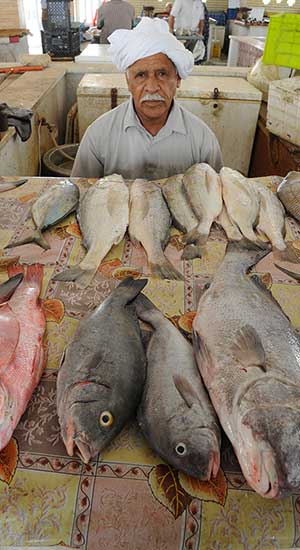
Fish Market - Hormozgan
Photographer: Afshin Bakhtiar
Eating and Food
Persian cuisine
Iranian cuisine refers to the country's culinary traditions. Despite the fact that Persians are only one of several Iranian ethnic groups who have contributed to Iran's culinary traditions, it is recognized as Persian cuisine due to the historically widespread use of the term "Persia" to refer to Iran in the Western world.
Iran's food has had substantial contact with the cuisines of its neighbors throughout its history, including Caucasian cuisine, Central Asian cuisine, Greek cuisine, Levantine cuisine, Mesopotamian cuisine, Russian cuisine, and Turkish cuisine, to name a few. Various historical Persianate sultanates flourished during Muslim rule on the Indian subcontinent, with the most notable and impactful of these polities being the Mughal Empire. Aspects of Iranian cuisine have also been significantly adopted by Indian cuisine and Pakistani cuisine through various historical Persianate sultanates that flourished during Muslim rule on the Indian subcontinent, with the most notable and impactful of these polities being the Mughal Empire.
Rice, meat, veggies, and nuts are common ingredients in Iranian main dishes. Herbs, as well as fruits including plums, pomegranates, quince, prunes, apricots, and raisins, are regularly utilized. Saffron, dried lime, and other sources of sour flavoring, cinnamon, turmeric, and parsley are common Iranian spices and flavorings that are blended and utilized in a variety of recipes.
Eating at home
Starter
An Iranian meal is likely to start with Sabzi (herbs), fresh herbs with walnuts, and feta cheese with bread. A standard soup is Ab-e jo, barley soup. There is also a thick meat soup known as Ash, which is popular for breaking Ramzan fast.
Main Dishes
The main meal is likely to include delicious kebabs with rice, the standard Iranian dishes. Forget the slices of indefinable meat served up after a late night out in the west: Iranian kebabs are the real thing, meat cooked on skewers over a charcoal fire. There are many kinds of kebabs- the most basic is Kubideh (minced), Juje is chicken, and the best of all is Barg (lamb). There are always served with rice (Berenj). Iranian are justifiably proud of their rice, which is always of the Basmati kind. Rice is often served with barberries (Zereshk), which provide a beautiful sweet-sour taste. The meal will also include beef or lamb stews (Khoresht), one of the jewels of Iranian cuisine. Traditional stews include gheimeh bademjoun (eggplant stew) and Ghormeh Sabzi, which are made with several different herbs. But the greatest of them all is Fesenjun, a rich and original creation made with chicken, pomegranates, and walnuts.
Dessert
After all this, you may not have enough room for dessert, which normally includes Iranian cakes and cookies. The former can be a bit too creamy for some western tastes- although slim locals seem to gorge themselves endlessly. The cookies are delicious, often flavored with saffron and varying greatly from region to region.
Eating out
Restaurants
Often, an Iranian restaurant will offer only a limited selection of dishes, most likely kebabs. Standards of hygiene are generally good and the quality is fine, but an endless diet of kebabs can become quite dull. Service can be offhand and the plastic tablecloths, elevator music, and bread in plastic bags are often uninspiring.
Not all Iranian restaurants are like this: a popular venue with locals is Restoran-e Sonati (traditional restaurant), a themed restaurant where the food tends to be more interesting and waiters in traditional dress serve up regional specialties.
In Tehran, international food is increasingly popular with the moneyed elite. There are several good Indian, Chinese, Italian, Lebanese, and French restaurants.
Fast food
Cheaper Ideas include the increasingly ubiquitous fast-food restaurants, which are known haunts of flirting couples, who seem attracted more by social interaction than the often-uninspired food. Fast food in Iran, however, may not be that fast- you line up to place an order, pay and are given a number that is finally read out over a microphone when the food is ready.
For a breakfast out, a dubious delicacy is the Kalleh pacheh (head and legs of a sheep). They normally also bake Taftoon on the premises. But the food- sheep's eyes, tongue, stomach, head, legs, and whatever else- served with a bowl of the cooking juices may not be to everyone's taste.
Culture
Iran Cinema
Iranian cinema is rightly famed worldwide for its quality and has a proud tradition dating back to well before the Islamic revolution to the dawn of the medium. Kiarostami is only one of many very fine Iranian directors to watch out for. Others include Jafar Panahi, whose best film is poleaxing the circle (Dayereh, 2000), a gritty look at the problems of a group of women in Tehran that took top prize at the Venice Film Festival. Ebrahim Hatami-Kia is one of the most successful of the group of directors who specialize in making films about the 1980-88 Iran-Iraq war.
Unsurprisingly, plenty of business is done in private DVDs, whose sellers will happily flog copies of otherwise banned material for little more than 2 US Dollars. They ply their trade outdoors near major squares despite occasional police crackdowns.
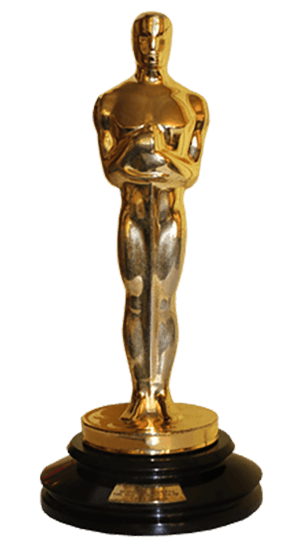
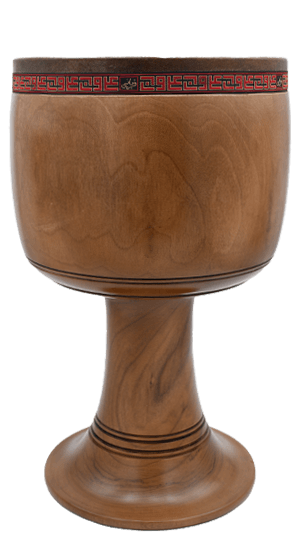
Iran Music
Traditional and western classical
Traditional Iranian music normally involves a small group of instrumentalists accompanying a vocalist singing traditional poetry. The undisputed master of traditional Iranian singing is Mohammad Reza Shajarian, a household name in Iran, whose rare concerts both at home and abroad sell out almost instantly. He is known in Iran simply as Ostad- the master.
Western classical music exists in Iran and Tehran has its symphony orchestra, whose eclectic repertoire includes Mozart as well as Iranian and Eastern composers.
Pop Music
Rock music exists in two forms- legal and illegal. Several pop bands operate freely with official permission from the Ministry of Culture and Islamic Guidance, which deems them to be acceptable. Iran's first aboveground post-revolution pop group was Arian, which gave its first public performance in 1998 after President Khatami came to power.
Iran Art
Art galleries of modern works are surprisingly plentiful in Tehran and have a fashionable ambiance. There are many talented Iranian artists- Kiarostamin himself is one. Unbeknownst to many, Iran also has a spectacular collection of European art, including major works by Bacon, Picasso, Pollock, and Renoir. Built up under the deposed shah, it is now kept firmly under lock and key in Tehran's Museum of Contemporary Art and shown only to specialist visitors. Under Khatami, a large chunk was shown to the public briefly for the first time since the revolution.

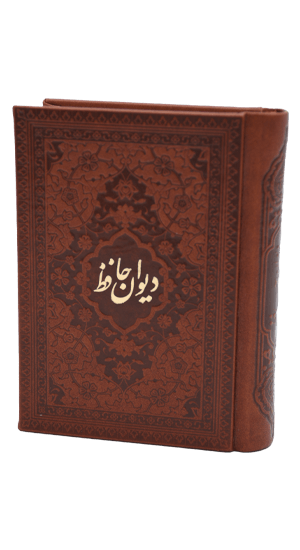
Iranian poems and poets
For thousands of years, Iranians have loved, admired, and practiced poetry. Poetry is a way of life for Iranians. Poetry is present in almost all Iranian customs and traditions in some form or another. Be it the appearance of a book of Persian poetry, most typically the Diwan of Hafez or the Shahnameh of Ferdowsi, on the Haft-Sin tables that Iranians arrange for their New Year, or a group reciting the Poems of Hafez on Shab-e-Yalda.
Apart from being a pleasurable activity, many Iranians regard reading Persian poetry aloud as a free lesson in which they can learn about life and human beings, as most Persian poetry is very didactic. Parts of Persian poetry are proverbs commonly used by people, and practitioners of various styles of music use them as the lyrics for their songs.
We can list ten top Iranian poems:
- Forogh Faroukhzad
- Simin Behbahani
- Parvin Etesami
- Ferdowsi
- Nezami Ganjavi
- Hafez
- Omar Khayyam
- Romi
- Sohrab Sepehri
- Ahmad Shamloo
Transportation
Intercity Travel
Bus
Traveling by bus in Iran is normally a relatively comfortable experience, although not as leisurely as that in neighboring Turkey. The distances are any case often very long and, in many cases, it is better to take the plane. It is always worth checking which make of bus is departing before booking the ticket. Bus stations, especially in Tehran, tend to be places of organized chaos, which seem intimidating at first but generally work efficiently.
For shorter journeys of up to three hours, shared taxis are usually available; they leave when full and charge a fixed fee. Journey times are shorter than for the bus, but stress levels will be higher as the drivers do not hang around.
Train
Iran's extensive train network is often overlooked by foreigners but it is perhaps the safest and most comfortable way to travel around the country. Premium compartments with imaginable mobile luxury can be booked on the flagship trains to big cities like Mashhad and Tabriz, but prices are low. Other routes may be less equipped but standards on overnight journeys are normally acceptable, so long as you have booked a compartment in a sleeper.
Air travel
Iran has to cope with tough US sanctions, which prevent it from buying any new Boeing or Airbus aircraft. Resourcing spare parts is a major problem. There have been several deadly crashes over the last three decades. But it is wrong to be too alarmist. Industry employees are skilled and highly practiced in the art of keeping planes in the air despite the sanctions.
Iran International airports
Iran has a bunch of international airports which are;
Urban transportation (bus, Taxi, and Metro)
Most foreigners, and many Iranians, will use only taxis for their journeys in Tehran and other big cities. There are two types of taxis in Iran: Savari (shared) or Dar bast (literally, door closed). The former is shared cabs; as they come by the curb they honk and you tell your destination to the driver, who will either stop to take you or carry on driving if he is not interested. But given that the process of hailing a Savari taxi can be daunting, many will prefer to pay extra for a private taxi, or Dar Bast. Essentially, any empty car can be taken this way so long as the driver agrees on the destination or price.
Tehran has its metro system, which finally opened in 1999 after years of planning to date back to before the revolution. Unsurprisingly, it is very busy. Women have quieter carriages reserved for them, but men have to squeeze into extremely tightly packed carriages. There is also a comprehensive bus network but it is very busy and has to cope with the city’s dreadful traffic.

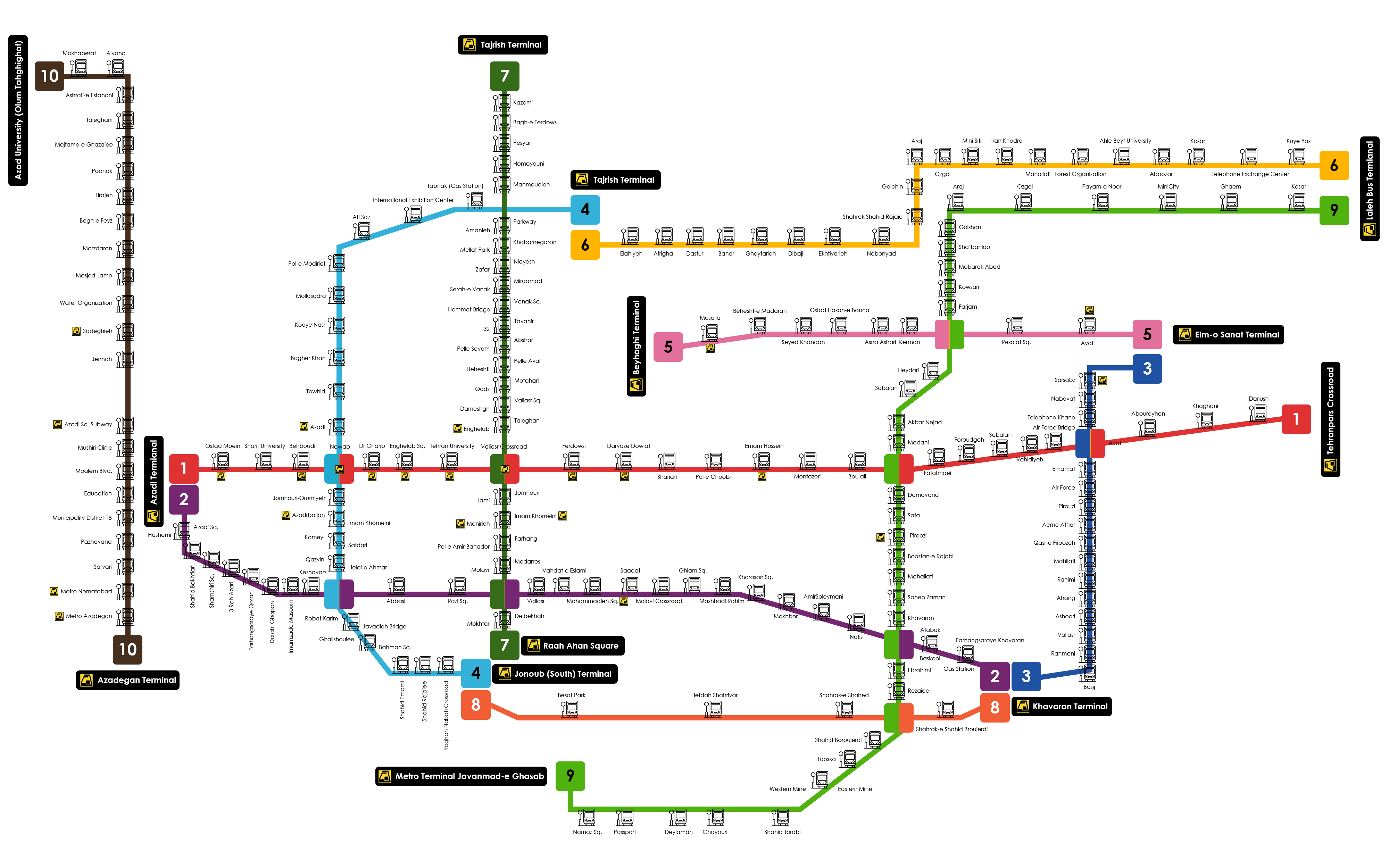
Payment
Paying
Iran’s economy runs on cash. The US trade embargo means that international credit cards and traveler’s checks from any company are next to useless here. As a result, the vast majority of transduction, even for high-denomination goods is made in cash.
There are “Iran checks”, essentially a domestic traveler’s check worth around 1 million rials (4 US Dollars). They can be bought from almost any bank and are increasingly popular as a way to avoid carrying heavy wades of notes.
Toman or Rial?
In Iran, things are not always what they seem at first and, confusingly, this is the case with money. The national currency is the rial. The snag is that almost everyone, from financial bosses to shopkeepers, talks about money in terms of tomans, which is the same as the rial but with one zero lopped off.
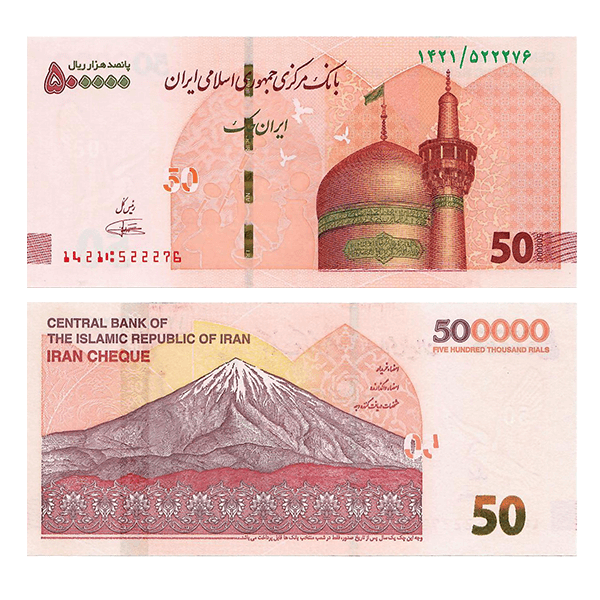
50,000 Toman = 500,000 Rials

Foreign currency
For years, the US dollar was by far the most widely used currency in Iranian oil transactions and for foreign currency reserves. However, the government has embarked on what appears to be a major drive to move foreign currency assets out of dollars into euros and a lesser extent yen. This is a response to the US pressure on the Iranian financial system, which has made dollar-based transactions increasingly difficult.
Changing money
Despite the animosity between the two governments, there is no problem exchanging US dollars. Euros are easy to change, pounds sterling a little less so outside Tehran. You are normally best advised to change money at a bureau de change- at a bank, the process and the lines are likely to belong and there is no good reason to go through with this. In most cities money changing offices are widespread. Street changers also lurk outside and they are likely to offer a slightly better rate (though you should take extra care when handling over your dollars in the street).
Visit the following link to check the exchange rate.
How much money is allowed to take with you to Iran?
All bank documents (such as checks, certified checks, traveler's checks, and other forms of financial transferrable documents), as well as non-registered securities such as bonds up to 10,000 euros or their equivalent in other currencies, are permitted to be physically imported. This importation does not necessitate filing a customs declaration. If the value exceeds the above-mentioned amount, the importer must notify the Customs Administration and register on the Customs website (cdf.irica.ir), send the cash to Bank Melli, and get a paper acknowledgment receipt with a tracking code.
Note 1: Bank Melli's currency reimbursement is subject to the approval of the Financial Information Unit (FIU).
Note 2: arriving passengers are permitted to avoid reporting currencies worth more than 10,000 Euros; however, in this case, the passenger must complete departure procedures and take the currency outside of Iran; otherwise, the passenger will be prosecuted under the Goods and Currencies Smuggling Law (2013).
Buying sim card in Iran
Iran's two main phone companies are Hamrah-e Aval and Irancell. Both firms provide international travelers with SIM cards and have extensive network coverage in Iran. I say extended because most cities, highways, and popular tourist spots are covered, but if you reach deep into the desert, Kurdish highlands, or Mazandaran jungle, the connection may be lost. If you stay within a decent distance of, and in between, significant cities, coverage will be ensured.
After arriving at the Imam Khomeini airport, purchase a SIM card at one of the Hamrah-e Aval or Irancell service facilities located around the cities. You'll need your passport and a valid visa for registration to activate your SIM card. You can also contact 9990 (for Hamrah-e Aval customers) or 09129990 for queries concerning your SIM card in English (for other numbers).
Security in Iran
Overview
Iran is disputably one of the safest countries in the Middle East for travel- at least if the question of road safety is put aside. Muggings and thefts against foreigners are extremely rare. Women find they are confronted with far less hassle than in Egypt and Turkey. Security is good. While the early days of the Islamic republic were marred by bomb attacks and assassinations attempts by the outlawed opposition, today Iran appears to enjoy stability. Bomb attacks are nowadays almost unheard-of. Generally, foreign visitors end their trip to Iran without experiencing any problems and wonder why the country has such a poor reputation abroad.
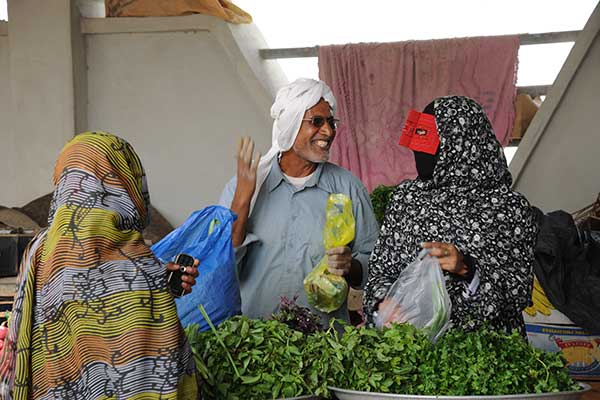
People of Iran
Photographer: Afshin Bakhtiar

Iran Road
Photographer: Afshin Bakhtiar
Roads
Visitors can drive in Iran for up to 6 months on a foreign driver's license, but it is recommended that they additionally get an International Driving Permit (IDP). If you're going to rent a car, be sure you know what the car rental company's requirements are before you go. Road accidents are common in Iran. When traveling by car, including public transportation, and crossing roadways, exercise extreme caution. If you're in an accident, don't leave the site, no matter how minor it is. Wait until the cops come before filing a report.
Iranian authorities have been known to erect impromptu roadblocks in cities and on major highways. To avoid getting into a fight, keep your identity with you at all times. You may be subject to Iranian customs and other rules if you desire to drive your vehicle into Iran. Travelers intending to bring motorcycles into the nation must meet specific conditions. On public roadways, women are not permitted to ride motorcycles. For more information, contact the Iranian authorities well in advance of your trip.
